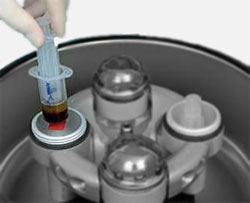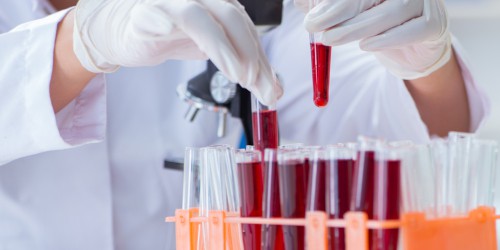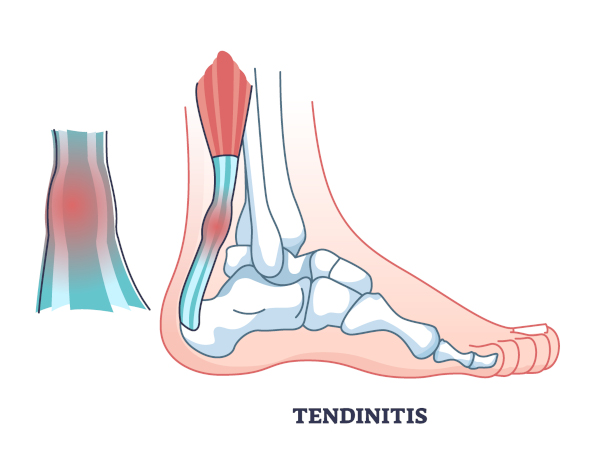- Home
- Advanced Treatments
- Platelet Rich Plasma (PRP)
Platelet-rich plasma (PRP) for chronic pain
Platelet-rich plasma (PRP) therapy is a cutting-edge regenerative medicine that enhances the body's natural healing processes to treat ligament, tendon, bone, and cartilage injuries and enhance healing post-surgery. Our team of experts has witnessed firsthand the transformative potential of PRP therapy in orthopedic care. This innovative treatment offers a promising alternative to traditional methods, providing patients with a minimally invasive option that can accelerate recovery and improve outcomes.
The use of PRP has gained significant popularity in the field of sports medicine and orthopedics for its power to enhance the healing of both acute and chronic ailments. If physical therapy and rest aren't successful in treating injured or damaged tendons, PRP may be recommended.
The goal of PRP is to reduce pain, repair damaged tendon tissue, and improve joint function.
- How does platelet-rich plasma therapy work?
- The benefits of PRP therapy
- PRP therapy for bone healing and cartilage repair
- PRP application in ligament and tendon injuries
- Enhancing surgical recovery with PRP
- What are the side effects of PRP?
- University Foot & Ankle Institute: rich in knowledge
- PRP FAQs
- Platelet-rich plasma vs corticosteroid injections, what’s the difference?
- Is PRP therapy painful?
-
Foot and Ankle Surgeon and Director of University Foot and Ankle Institute
Dr. Bob Baravaria DPM, FACFAS is a Board-Certified Podiatric Foot and Ankle Specialist. He is an assistant clinical professor at the UCLA School of Medicine and serves as Director of University Foot and Ankle Institute.
Dr. Baravarian has been involved in athletics his entire life and played competitive tennis in high school and college. He has an interest in sports medicine, arthritis therapy, and trauma/reconstructive surgery of the foot and ankle. He is also fluent in five languages (English, French, Spanish, Farsi, and Hebrew),
Read more about Platelet Rich Plasma (PRP) on Our Blog
 Dr Baravarian is awesome. The best care. Very upfront. Love him and his stafg.Sue B.
Dr Baravarian is awesome. The best care. Very upfront. Love him and his stafg.Sue B. Great experience. Great communication. Great direction for my care. Very happy I chose to go with this particular doctor and o...Christopher R.
Great experience. Great communication. Great direction for my care. Very happy I chose to go with this particular doctor and o...Christopher R. Great service and care. Highly recommend Dr. Franson.David B.
Great service and care. Highly recommend Dr. Franson.David B. If you have to go see a Doctor than this is a great experience.Frank M.
If you have to go see a Doctor than this is a great experience.Frank M. My doctor was great. Really greatRudolph B.
My doctor was great. Really greatRudolph B. comfortable atmosphere
comfortable atmosphere
professional and knowledgeable staff
I saw Dr. Franson for a second opinion on my foot pain diagnosis.
...Challo Dr fransons office in Valencia is the Best...I highly recommend them!!Chris C.
Dr fransons office in Valencia is the Best...I highly recommend them!!Chris C. Good.David E.
Good.David E. Your Santa Barbara office and Dr. Johnson always give me excellent care!Jayne A.
Your Santa Barbara office and Dr. Johnson always give me excellent care!Jayne A. Dr. Gina Nalbadian was amazing!! I came in with an emergency foot situation and she had wonderful bedside manner and resolved m...Danielle C.
Dr. Gina Nalbadian was amazing!! I came in with an emergency foot situation and she had wonderful bedside manner and resolved m...Danielle C. I was frustrated that after 3 weeks I still hadn’t heard back about my PT referral status. And I did sit in a room for over 30 ...Sarah C.
I was frustrated that after 3 weeks I still hadn’t heard back about my PT referral status. And I did sit in a room for over 30 ...Sarah C. I’m very pleased with Dr. Kelman.Alan S.
I’m very pleased with Dr. Kelman.Alan S.



